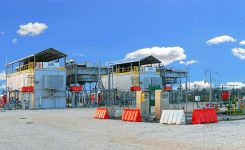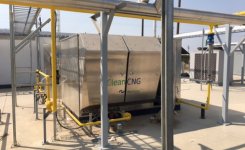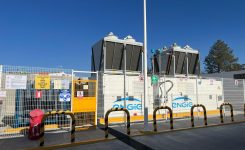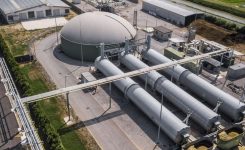News
Biogas, biomethane and decarbonisation: growing European interest in a sustainable future
Growing investment in the installation of biomethane production plants is taking place across Europe, with around 20,000 active sites in 2021.
The annual reports of two associations dealing with infrastructure and RNG in Europe, the European Biogas Association and Gas Infrastructure Europe, track the location and quantity of production plants across Europe.
In the 2020 edition there were 729 European installations, while in the 2021 edition there were 994.
France, Italy and Denmark show the highest installation growth rate.
In fact, 11 new plants came into operation in Italy in 2020, and the total biomethane production capacity in Italy is 25,445 cubic metres per hour, meaning ~ 220 million cubic meters per year.
Map of biomethane plants in Italy – AssogasMetano
Biogas and biomethane, generated from renewable raw materials, reduce gas emissions by at least 70 per cent compared to natural gas or other fossil fuels
It is crucial to consider that investment in biogas and biomethane production makes a substantial contribution to decarbonisation: it enables a sustainable and forward-looking ecological transition.
Moreover, it is an effective solution to face rising gas prices.
At present, however, the European Union’s gas demand is only 5% covered by biomethane despite the fact that there is considerable margins for improvement, which could lead to a coverage of 25% of demand (Il Sole 24Ore). According to estimates by Gas For Climate, biogas and biomethane production in Europe will increase from 191 TWh in 2020 to 1,020 TWh in 2050.
Some examples of efficient infrastructures for biogas and biomethane production come from France and Portugal: Gaz Réseau Distribution France, the main transalpine gas distributor, has as many as 315 active plants connected to the grid and has submitted additional 1,180 projects to be approved. The French Government has in fact encouraged the development of biomethane distribution networks in the grid.
The Portuguese gas distributor Galp Gás Natural Distribuição is testing with the distribution of a mixture of natural gas and oxygen through its network to residential, third-sector and industrial Customers.
SAFE&CEC systems: ensuring production and distribution
The increasing implementation of biomethane plants demonstrates its relevance and usefulness in the energy transition. It is necessary to take into account that biomethane production is stable but gas demand is not constant throughout the year, and infrastructure must be able to adjust properly to these fluctuations.
SAFE&CEC has developed reliable solutions capable of producing biomethane continuously and feeding it into the grid according to actual local needs.
The Grid Reverse Flow (or Rebours) is a system that applies the inversion technique: it involves compressing unconsumed biomethane on a distribution network which then feeds it into the grid at a higher pressure.
The system is automatic: the pressure threshold of the network is checked and when high levels are reached (resulting from low consumption) an activation of the compression unit takes place.
The pressure increase is mitigated and brought back to the minimum threshold by conveying the excess biomethane to distant consumption areas.
The system optimises the efficiency of the energy system by facilitating the circulation of any surplus gas for immediate consumption or for future storage and use.
Fuel storage is possible through the use of the complementary Green Buffer Storage system: this is a temporary storage unit installed on the distribution system.
The system prevents overproduction of biomethane and allows the fuel to be used in response to demand trends.
As soon as the grid pressure drops, the previously stored biomethane is injected into the grid through a 2 stage pressure reduction system that reduces the gas pressure to the treshold required by the grid (i.e from 250 to 3.5 barG).
Intelligent and optimised long-term solutions are essential: SAFE&CEC works daily to develop infrastructures that can contribute to the achievement of decarbonization targets.
We thank GRDF and CH4NGE for pictures published









